Last Updated on: 11th October 2024, 02:22 pm
We know that picking the right football kit for your club is a big deal. You want all of your players to look good when they represent their team on the pitch. However, uniformity wasn’t such an important issue in the early days of the sport. Things have certainly come a long way when it comes to football kit design.
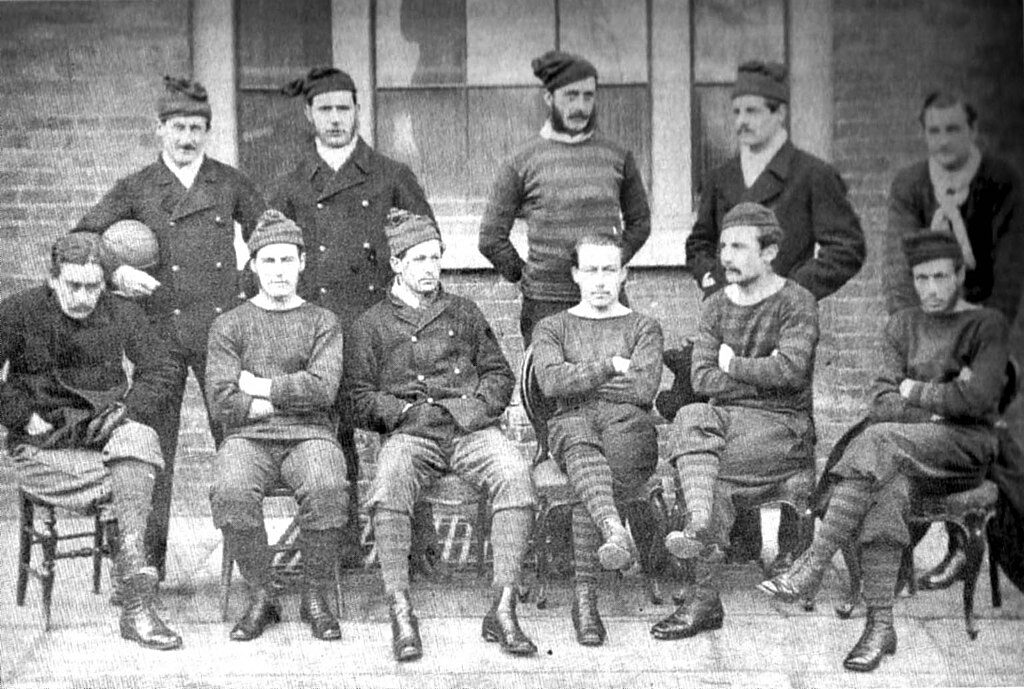
The Royal Engineers, 1872
Unknown Author, Public Domain
No uniformity
When football started to rise in popularity, teams wouldn’t have a standard kit design. Players would often wear different colours and styles. For example, the width of hoops would differ between players. Many football players also played cricket, so resorted to wearing their cricket whites. Teams would wear coloured caps or sashes to identify themselves.
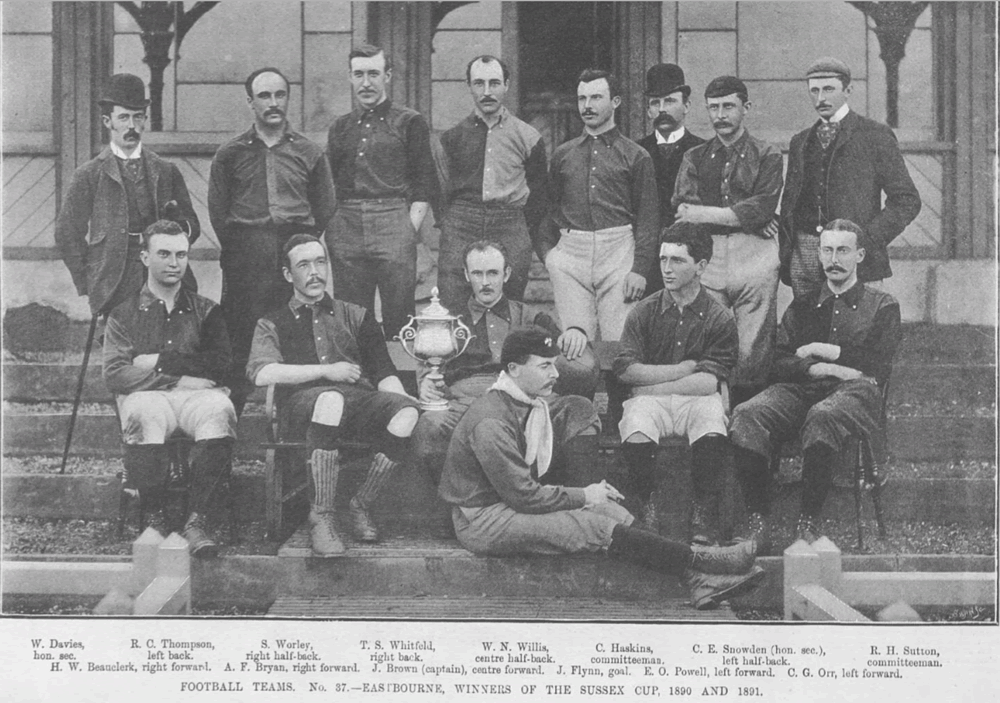
Eastbourne Football Club, February 1892
Unknown author / Public domain
Colourful Shirts
In the 1860s and 1870s, the upper classes almost exclusively played football. Players would be responsible for buying their kit and it was only the wealthy that could afford to do so. Players wore the colours associated with their schools or sports teams. Designs often featured bright colour combinations.
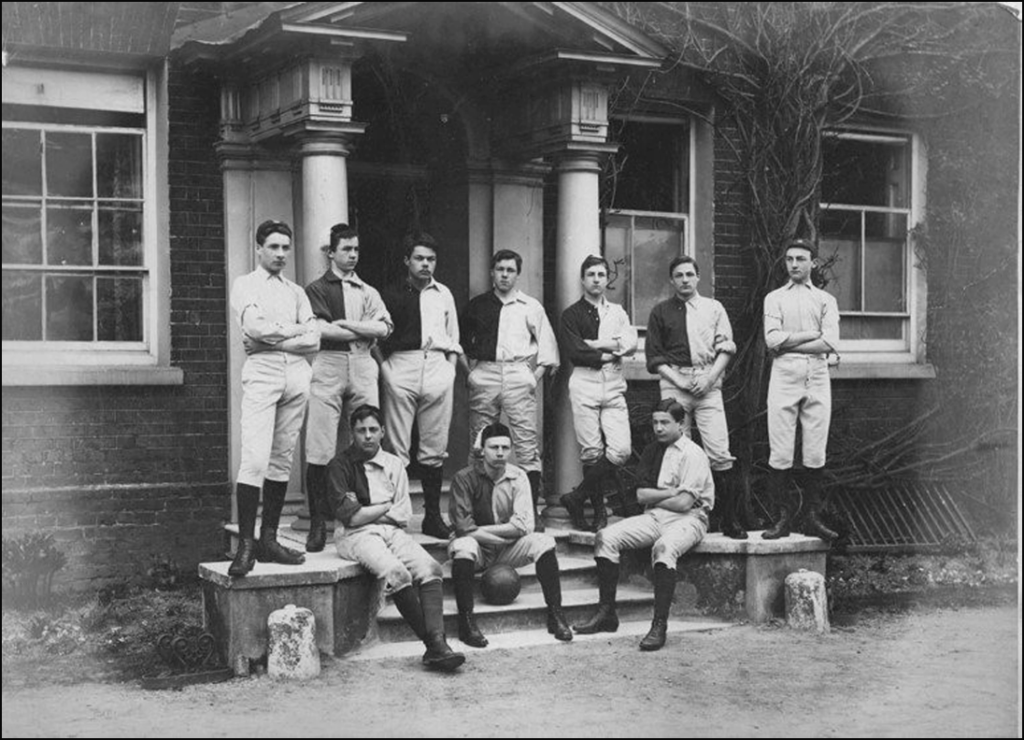
Forest School football team, 1884
Unknown author / Public domain
Limited Football Kit Design
More people started taking up the sport so sports outfitters started selling kits. However, they offered a limited choice of colours and styles. Your main choices would have been a single colour, a hooped design, or a halved design. Confusingly, people often referred to the half-shirt design as “quarters” and used the term “harlequin” was to describe the pattern we now call “quartered”. Vertical stripes did not appear until around 1883 when the term “shirts” also appeared for the first time.
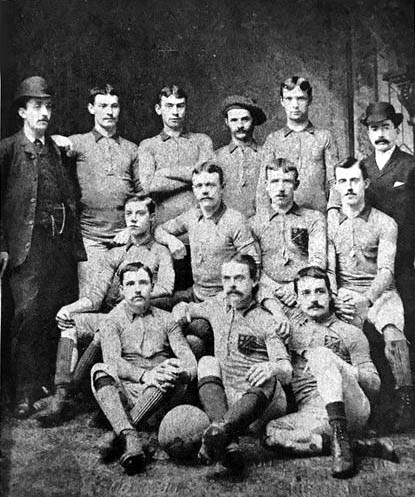
The Blackburn Olympic FC, 1883
Unknown author / Public domain
Professional Football
Towards the end of 1880s, football was becoming a professional sport, which meant the club became responsible for buying kits. Due to cost-cutting, kit design became simpler and cheaper. This meant saying farewell to some of the more exciting colours and styles.
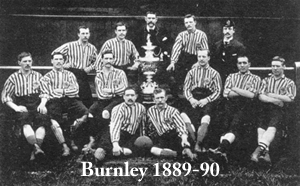
Unknown Author, Public Domain
Registered Designs
In early games, colour clashes were common. Clubs started registering their kit in 1891. This followed a match where both Wolves and Sunderland turned up to play in red and white stripes. This meant each of the teams would have a unique shirt design. If two teams wanted to register the same colours, priority was given to the one that had been in the league the longest. In the example of Wolves and Sunderland, Wolves swapped their red and white striped design for black and gold.
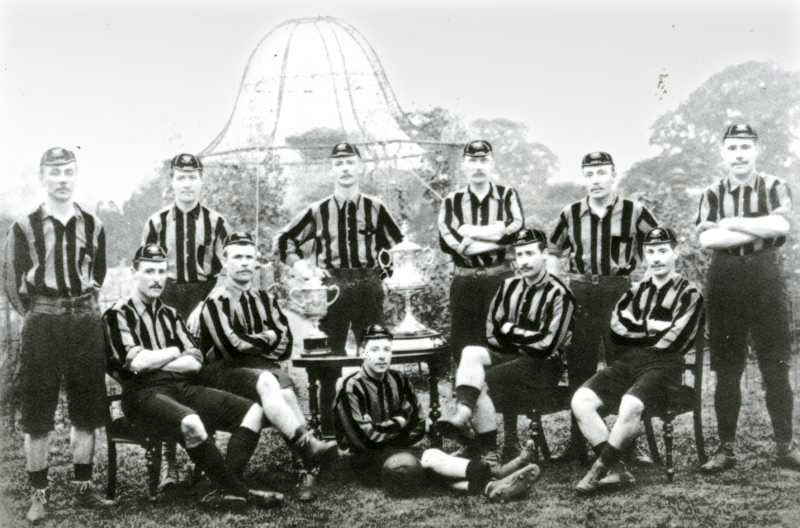
Wolverhampton Wanderers Football Team, 1893
Unknown author, public domain
Second Division
Once the Second Division was added in 1892, the rules on kit design were relaxed. Teams just kept a set of plain white shirts in case of a clash. To make the process easier and to prevent teams having to carry extra kit to every away game, the home side would be made to change.
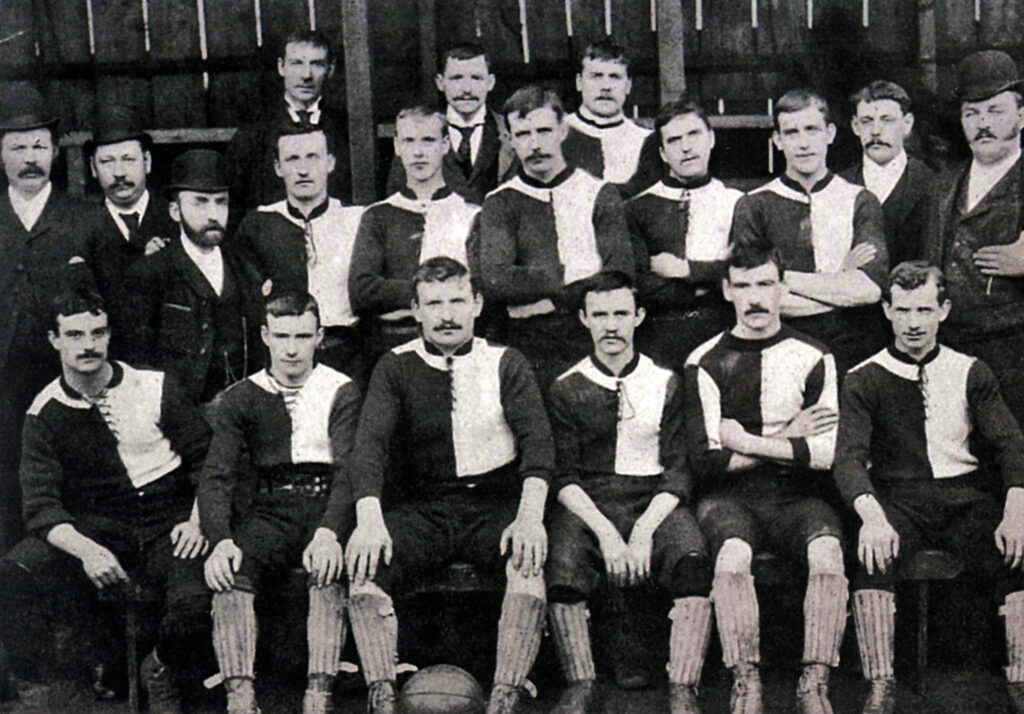
Newton Heath FC, 1892-3
Unknown author / Public domain
Modern Day
Towards the end of the Victorian period, football kit design started to resemble the kit that we are used to seeing now. However, there is still a long way to go before we get to the unique and exciting new designs we see now. At Pendle, we’re always looking for modern designs that we hope will become classic designs one day. Be sure to check out our range of designs.
Tags: discount football kits, football kit design, Football Kits, history, history of football, history of football kits

